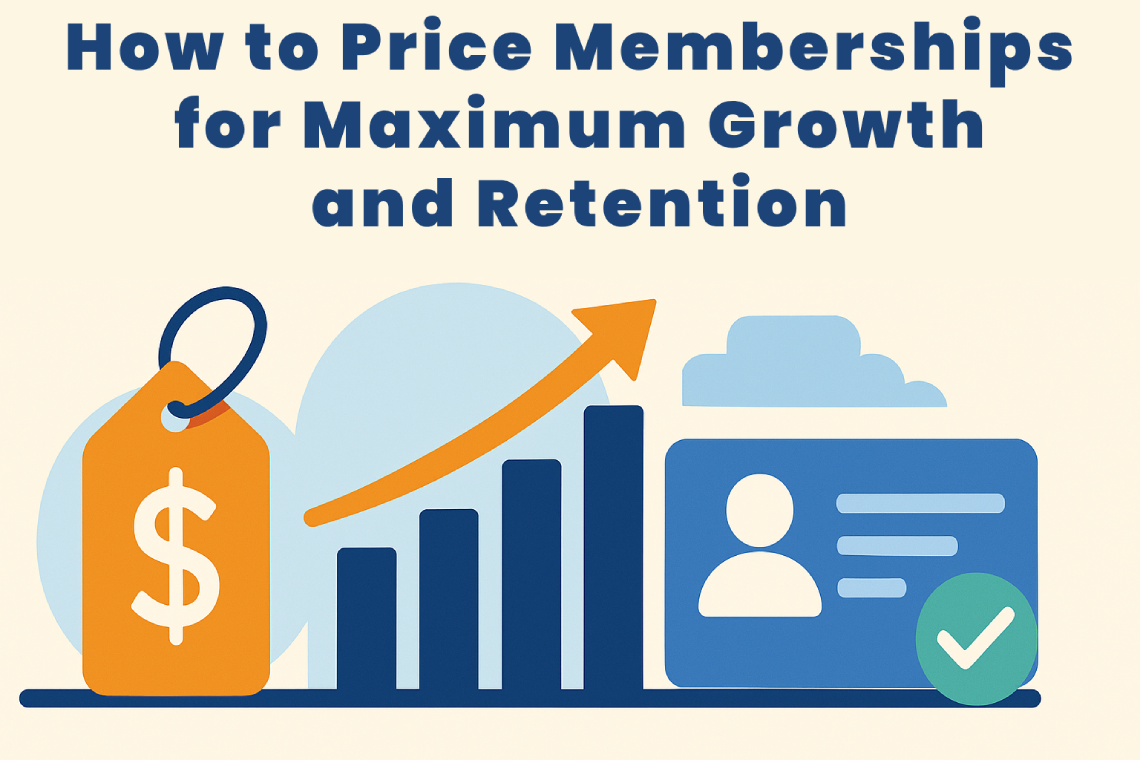
Membership Pricing Strategy: How to Price Memberships for Growth and Retention
Pricing your membership plans isn’t just about throwing a number on a flyer. It directly affects how potential members perceive your value, how committed they’ll be, and whether your business survives long-term. Whether you run a jiu-jitsu gym, yoga studio, kids' martial arts program, or a fitness class business, the right pricing structure can fuel growth, improve retention, and make managing members dramatically easier.
This guide walks you through real-world membership pricing strategies that balance affordability, profitability, and growth — with examples from actual subscription businesses and best practices you can implement immediately.
1. Understand the Core Membership Models
The first step in building a profitable and sustainable pricing strategy is choosing the right pricing model. Each model comes with trade-offs in revenue predictability, accessibility, and how much flexibility you give members. The most common models include:
- Flat Monthly Membership: A recurring monthly payment that gives members unlimited access to your classes or facility. This works well for high-frequency users and builds predictable revenue.
- Tiered Pricing: Offers different levels of membership based on usage or perks. For example: 4 classes/month, 8 classes/month, and Unlimited tiers. Tiered pricing works for capturing a wider audience and lets you upsell without complicating your offering.
- Class Packs (Punch Cards): A prepaid block of classes (e.g. 10 for $120) that expire after a set period. This works well for casual members or those new to your gym.
- Annual Memberships: Paid upfront for the year, often at a discounted rate. This generates upfront cash flow and long-term commitment.
- Family / Group Plans: Discounted membership when multiple people join together. Helps increase volume without deeply discounting individual seats.
- Free Access + Add-Ons: Basic access is free or low-cost, and members pay for classes, seminars, or gear. Useful in community-driven organizations or when testing new markets.
You can blend multiple models too. Many gyms offer both unlimited memberships and class packs, giving members the option to upgrade over time.
2. Benchmark Your Market — But Don’t Race to the Bottom
Researching what others charge in your area (and industry) helps you anchor your pricing. It also protects you from undercharging or pricing yourself out of reach. Here's how to do it right:
- Look at 3–5 local competitors. Write down their monthly pricing, drop-in rates, and any special perks (family discounts, locker access, priority booking, etc).
- Compare your offerings honestly. Do you offer better instruction? Nicer facilities? Community support? Those add real value that justifies a higher price.
- Factor in your costs. Don’t base your pricing entirely on competitors — know your breakeven point. Include rent, instructor pay, insurance, equipment, software, and marketing.
Pricing is positioning. Charging too low makes you look cheap or beginner-level. Charging too high without backing it up makes retention harder. The sweet spot is offering clear value for the price.
3. Limit Your Options — Simplicity Sells
Too many options overwhelm people. It's a psychological friction point. Give people 2–4 choices max, each with a clearly increasing value. For example:
| Plan | Price | Includes |
|---|---|---|
| Drop-In | $20 | One class, no commitment |
| Starter | $69/month | 4 classes/month |
| Core | $99/month | 8 classes/month + member events |
| Unlimited | $129/month | Unlimited access + guest passes + shirt |
This gives new members an easy way to get started and upsell themselves later. The biggest mistake is offering six tiers with minor variations. Keep it clean.
4. Use Drop-In Pricing as a Sales Tool
Your drop-in rate shouldn’t just be a backup option — it’s a pricing anchor that helps sell memberships.
If a member trains three times in a week at $20/class, that’s $240+ per month. If you offer unlimited at $129/month, the value is obvious. Even your 8-class/month tier would save them money.
Make your per-class drop-in rate higher than the effective per-class rate of your membership tiers. This incentivizes commitment without hard selling.
5. Family and Group Plans — But Don't Lose Money
Family memberships can be powerful for retention, especially in martial arts or youth sports. But they need limits.
Here’s a basic structure that balances value with business sustainability:
- Individual Unlimited: $129/month
- 2-Person Plan: $220/month
- Family Plan (up to 4): $275/month
- Each Additional: +$40/month
This gives families clear savings but prevents abuse. Most families don’t use all the included access anyway — but they’ll stick around longer knowing everyone is covered.
6. Upsell With Add-Ons and Specialized Programs
Don’t bloat your base membership. Keep it clean, then upsell additional services to the members who want them.
Examples:
- Private lessons
- Competition team
- Personal training or nutrition planning
- Workshops (e.g. women's self-defense, kids' camps)
- Branded merchandise
People love options, but only if they’re optional. This lets you maximize revenue without pricing out casual users.
7. Use Trials and Promotions to Lower the Barrier
If your only path to membership is a $129 commitment on day one, you're missing a lot of potential signups.
Try offering:
- Free first class – Zero commitment and gets them in the door.
- 10 days for $10 – A psychological win that still shows value.
- Referral credit – Both members get $20 off if a friend joins.
- Waived sign-up fee during promotions or holidays.
These work because they reduce fear, let people try before they commit, and generate momentum. Just be sure to have a clear upsell path after the trial.
8. Raising Prices Without Losing Members
You’ll eventually need to raise prices. That’s normal. Costs go up. You improve your offerings. You deserve to be paid for that.
Here’s how to do it without backlash:
- Give 30–60 days' notice
- Grandfather current members if feasible
- Frame it in terms of added value — new class times, better scheduling, upgraded facility, etc
- Keep increases small and consistent (e.g. $5–$10 every 18–24 months)
If you haven’t raised prices in 2+ years, you’re probably overdue. Most loyal members won’t blink at small, well-justified increases — especially if you communicate clearly.
9. Build Non-Dues Revenue Streams
Memberships are great. But they shouldn't be your only income stream.
Start building additional revenue by offering:
- Branded gear: shirts, rash guards, hoodies
- Seminars or drop-in special events
- Room rental (for photographers, community groups, etc.)
- Affiliate sales (nutrition, supplements, etc.)
- Gift cards
Non-dues revenue helps buffer you during seasonal slowdowns and lets you monetize highly engaged members more effectively.
10. Pricing Is Strategy — Not Just Math
Pricing tells people how to perceive your value. The cheapest option isn't always the best choice. Think of your pricing as a positioning tool, not just a payment gateway.
When in doubt, here are some rules to follow:
- Keep it simple — no more than 3–4 options
- Anchor with a drop-in rate that makes monthly worth it
- Offer trials and promos to remove friction
- Review pricing every 12–18 months
- Don’t be afraid to charge what you’re worth
Final Thoughts
With the right pricing structure, your business becomes more than a gym or a school — it becomes a system that rewards long-term commitment, simplifies operations, and grows naturally through referrals and retention.
Whether you’re starting from scratch or adjusting your pricing after years in business, the key is to make sure your model reflects your value, supports your goals, and makes it easy for people to say “yes.”
ManageMemberships helps make that possible. With flexible plan setups, automatic billing, trials, class packs, and family pricing support, you can implement the strategy that’s best for your business — without manually tracking anything.
Need help mapping it all out? Book a demo and see how we can help you price for retention and scale.

